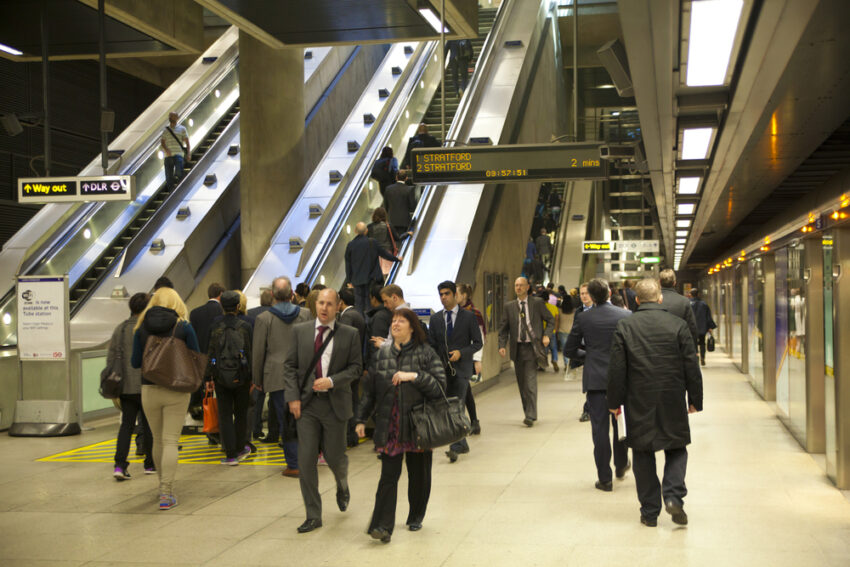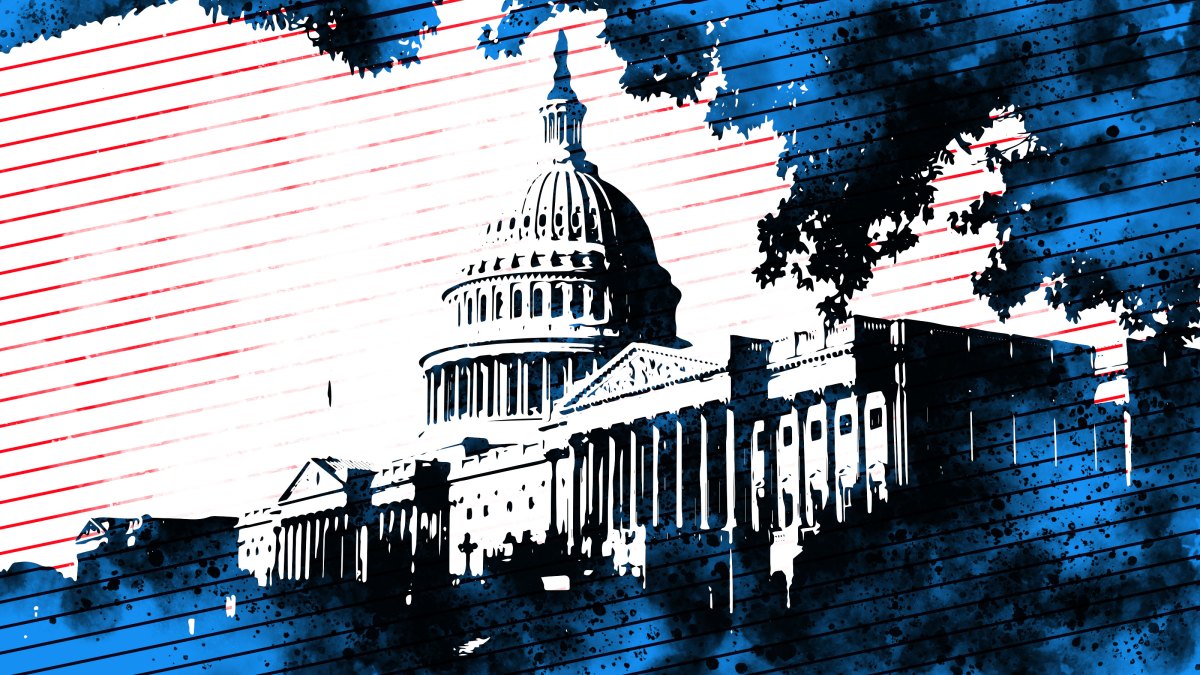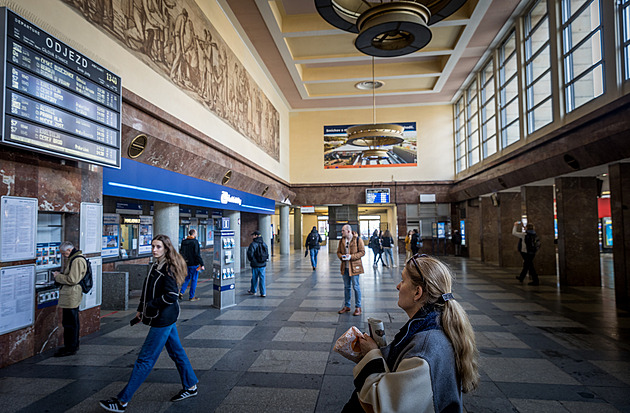Apple mega-bucks give Ireland a €14 billion dilemma
More billions are on the way from the tech giant as the Irish hoover up multinational taxes at a breakneck pace — but struggle to build what this booming nation needs.

DUBLIN — Jack Chambers has the kind of problem most finance ministers dream of — managing sky-high expectations.
With Ireland’s budget a week away and a snap election expected soon after, the man in charge of the country’s purse strings has more money than he can possibly spend.
Ireland’s embarrassment of riches is about to grow by another €14.1 billion. That’s thanks to a surprise European Union court judgment ordering the Irish to take long-disputed funds from tech giant Apple — proceeds from tax the iPhone behemoth failed to pay on global profits earned outside the U.S. from 2004 to 2014, and claimed by Apple subsidiaries in Ireland.
Chambers will include that colossal windfall when he presents the 2025 budget to lawmakers on Oct. 1, the unofficial starting gun to an election campaign that most politicians and observers expect to happen by November. Adding that sum to the nation’s balance sheet seems likely to produce an unprecedented budgetary surplus topping €20 billion – more than €3,700 per man, woman and child in this country of 5.4 million.
Yet government leaders insist the Apple billions won’t alter their plans to introduce a vote-winning budget — for Ireland already has more than enough cash to spend as responsibly or recklessly as it wants.
That’s because, over the past decade, efforts in Brussels and Washington to force multinational companies to pay more tax have unwittingly spurred those firms to double down on Ireland, booking ever-rising mountains of profits through their operations here.
In 2015, in response to EU and U.S. scrutiny, Apple switched ownership of its intellectual property (IP) to Irish tax-resident firms — a shift so valuable on paper that it caused Ireland to record a 32.4 percent rate of growth that year, a surreal postwar European record dubbed “leprechaun economics” because it bore no relationship to reality on the ground.
Placing ownership of its IP in Ireland created recurring Irish tax credits and obliged other Apple units outside the U.S. to pay royalties on device sales to the Irish “owner” of the technology, which in turn paid knockdown rates of tax on these transferred profits to Ireland’s lucky Revenue Commissioners.
Leprechaun economics
When then-President Donald Trump and the Republicans passed legislation in 2017 targeting U.S. multinationals’ foreign revenues, the new rules encouraged more American firms to shift assets out of zero-tax havens in the Caribbean and into low-tax Ireland, where the headline rate on corporate profits of 12.5 percent suited the Trump plan’s requirement for a minimum rate of 10.5 percent on profits booked overseas.
And finally in 2021, as the administration of Joe Biden and the Organization for Economic Cooperation and Development jointly pushed to force low-tax jurisdictions such as Ireland to raise their rates closer to international norms in the mid-20s, the Irish held out until they won a commitment to cap that increase at 15 percent.
That change went live in Ireland on Jan. 1, increasing the amounts that more than 1,800 multinationals, mostly American, pay here. There’s been no reported exodus in response, as IDA Ireland, the state agency tasked with wooing foreign firms and keeping them here, instead continues to announce win after win.
Apple today is reckoned to be, by far, Ireland’s biggest taxpayer in a top tier that includes the European HQs of Microsoft, Google, Meta and X in Dublin, Medtronic in the western city of Galway, a hub for U.S. medical device firms, and Pfizer, Eli Lilly, Merck and most other top American drugmakers clustered in the southwest city of Cork, which is also home to Apple and its 6,000-strong Irish workforce.
The Department of Finance and external economists have long warned of the risks posed by Ireland’s dependence on a handful of top U.S. employers, who could park their IP elsewhere if American tax rules change again to Ireland’s disadvantage. But they’ve stopped issuing forecasts that the corporate tax haul is doomed to fall — since it keeps hitting record highs.
An unexpectedly large August payment from Apple has helped deliver a corporation tax treasure chest forecast to approach, if not top, €30 billion this year. That would be far ahead of 2023’s record €23.6 billion and seven times higher than a decade ago — and it wouldn’t even include the EU order on collecting Apple’s back taxes.
Gimme, gimme, gimme
So what could Ireland’s problem possibly be?
To win the coming election, the three-party coalition of Prime Minister Simon Harris needs to convince voters it will invest its largesse both aggressively and effectively. Most voters don’t want to hear about prudence, macroeconomic wisdom, or saving for a rainy day.
Public demands for improvements span more housing, more medical services, more public transport, more schools, teachers and affordable child care, and stronger water and electricity networks, reflecting a society exploding in size and pent-up need.
The labor force has surged by 600,000 in just four years to reach a record-high 2.8 million. Most of the new workers are immigrants from other EU states, who can relocate here without restriction, Ukrainian war refugees granted temporary permission to work legally and non-Europeans with work visas, including more than 30,000 last year and 27,000 this year, particularly from India, the Philippines, Brazil, China, Pakistan and South Africa.
Many of these new workers struggle to find anywhere to live, a point of social tension and anxiety intensified by asylum-seeker inflows from neighboring Britain and rising far-right agitation against foreigners in general. Multinational executives, notably Apple, privately complain to government ministers that Ireland isn’t issuing work permits or improving infrastructure quickly enough.
All sides agree that Ireland must build hundreds of thousands of new homes, as well as the required power and sewage resources, to cope. The main opposition Sinn Féin — a nationalist party that has taken an electoral hit over its pro-immigrant stance — says the answer is a massive investment in state-subsidized housing.
But the government’s spending watchdog, the Irish Fiscal Advisory Council (IFAC), says the state has already injected too much money into an economy with full employment and record private savings in the bank.
Citing research from the Central Bank of Ireland, IFAC reckons that government overspending in the past three budgets has perversely worsened citizens’ financial challenges, driving up prices and adding €1,000 to average household bills. It wants the government to use the budget to honor its 2021 declaration of a fiscal discipline rule capping yearly increases in expenditure at a still-expansive 5 percent.
The government has never stuck to that commitment — and is preparing to introduce its biggest package of tax cuts and spending hikes yet on Oct. 1.
Put aside for a rainy day
Chambers, the finance minister, in July publicly committed to a 2025 budget of €105.4 billion, 6.9 percent higher than the current year. He since has pledged extra cost-of-living support to households that, along with other last-minute moves, could drive that total higher.
A government official, speaking on condition of anonymity because he wasn’t authorized to reveal budget details before Oct. 1, said Chambers and Public Expenditure Minister Paschal Donohoe would explain that day how Ireland intends to deploy the extra Apple billions.
The official said the Apple funds, due to be collected gradually from escrow by mid-2025, would be included in next year’s projected revenue stream — but won’t be used as an excuse to hike the budget even higher.
He said the bulk, if not all, of Apple’s inbound €14.1 billion would likely end up in Ireland’s two newly created sovereign wealth funds — the Future Ireland Fund and the Infrastructure, Climate and Nature Fund — or in another Treasury-managed venture, the Ireland Strategic Investment Fund. All would be used to fund capital projects, particularly during future global downturns, when multinational profits may tumble and today’s fully employed construction crews may be looking for work.
“These investment vehicles were set up specifically to manage these exceptional windfalls we’re getting from top multinationals paying their tax here, and spending the proceeds on major projects when the planning, human resources and economic fundamentals are right,” the official said.
He pointed out that current 2025 budget plans include an unprecedented €14.5 billion for capital projects. “There won’t be a single construction worker in Ireland short of work. They’ll have their pick of jobs,” he said.
And that is the real challenge for Ireland — how to use its plentiful cash effectively in a country that has too few available workers, unusually high and rising costs, and a planning system that can take years of objections and litigation to navigate.
“Our corporation tax revenues are soaring and seem set to rise even higher,” said Seamus Coffey, director of the budget watchdog IFAC.
“Where are the workers going to come from? We have a record level of employment,” he said. “Where is the capacity of the economy actually to deliver the outcomes we want? How are we going to ramp up housing production if there isn’t spare capacity there? If you throw more money at the problems, you’ll have more money chasing a fixed amount of goods and services and just drive up inflation.
“Money isn’t the problem,” he emphasized. “Labour is.”
Manna from heaven
Those arguing for restraint point to headline-hogging procurement debacles, ranging from the parliament’s new bike shelter — somehow, it cost €336,000 and doesn’t even keep out the rain — to the decades-long struggle to build a new children’s hospital in Dublin.
Work began in 2016 and was due to end in 2020 but is now due to be completed in 2026, when the price tag will top €2.2 billion, putting it on course to become the world’s most expensive hospital.
Other long-discussed and expensively researched plans, from Ireland’s first subway line to scores of floating Atlantic wind turbines, have yet to move beyond the blueprint stage. One of the world’s top offshore renewable firms, Norway’s Equinor, withdrew from the Irish market citing its slow planning culture and other barriers.
But Ireland’s most audience-pleasing economist, David McWilliams, thinks official Ireland is thinking scared — and missing an opportunity — by opting to bank Apple’s manna from heaven.
“Ireland is a country with first-world income but third-world infrastructure,” he argued in a blog post speculating how the Apple money could be spent. He proposed importing engineering brains from abroad, particularly Spain.
“We don’t have the guts to build so we take the cowardly option, we save, avoiding taking a decision,” McWilliams wrote. “Proper countries build, endowing their citizens with first-rate public infrastructure. We are afraid to do so. How depressing is that?”
What's Your Reaction?

















































